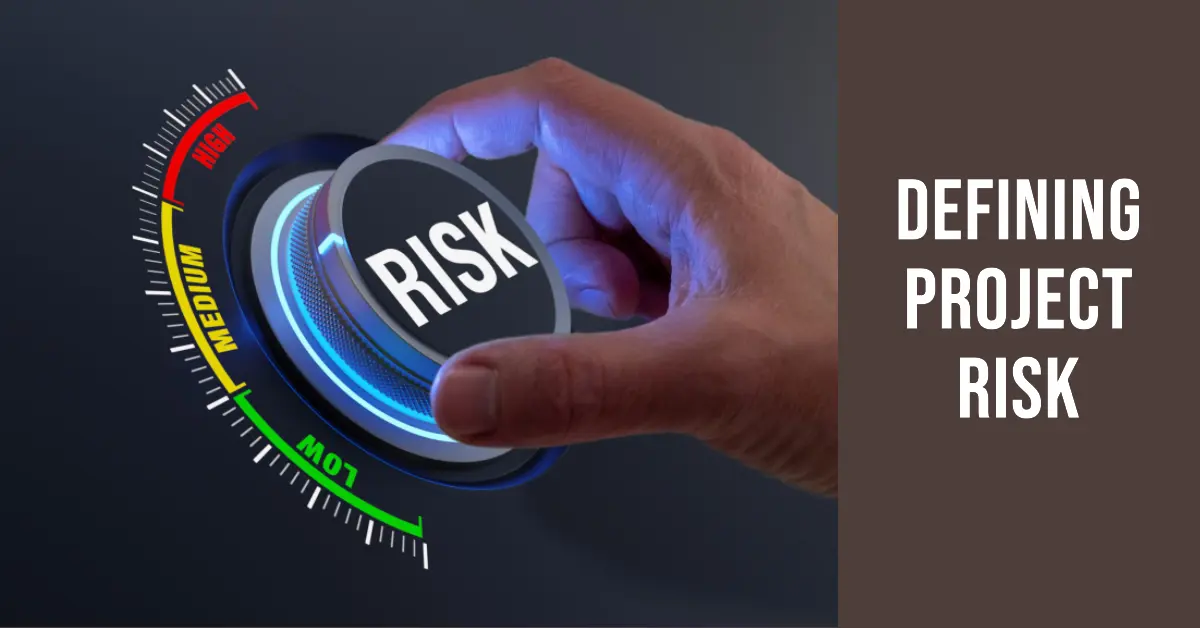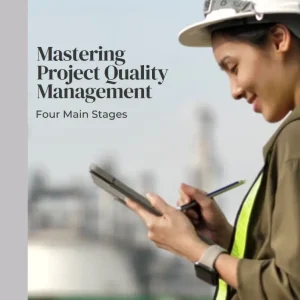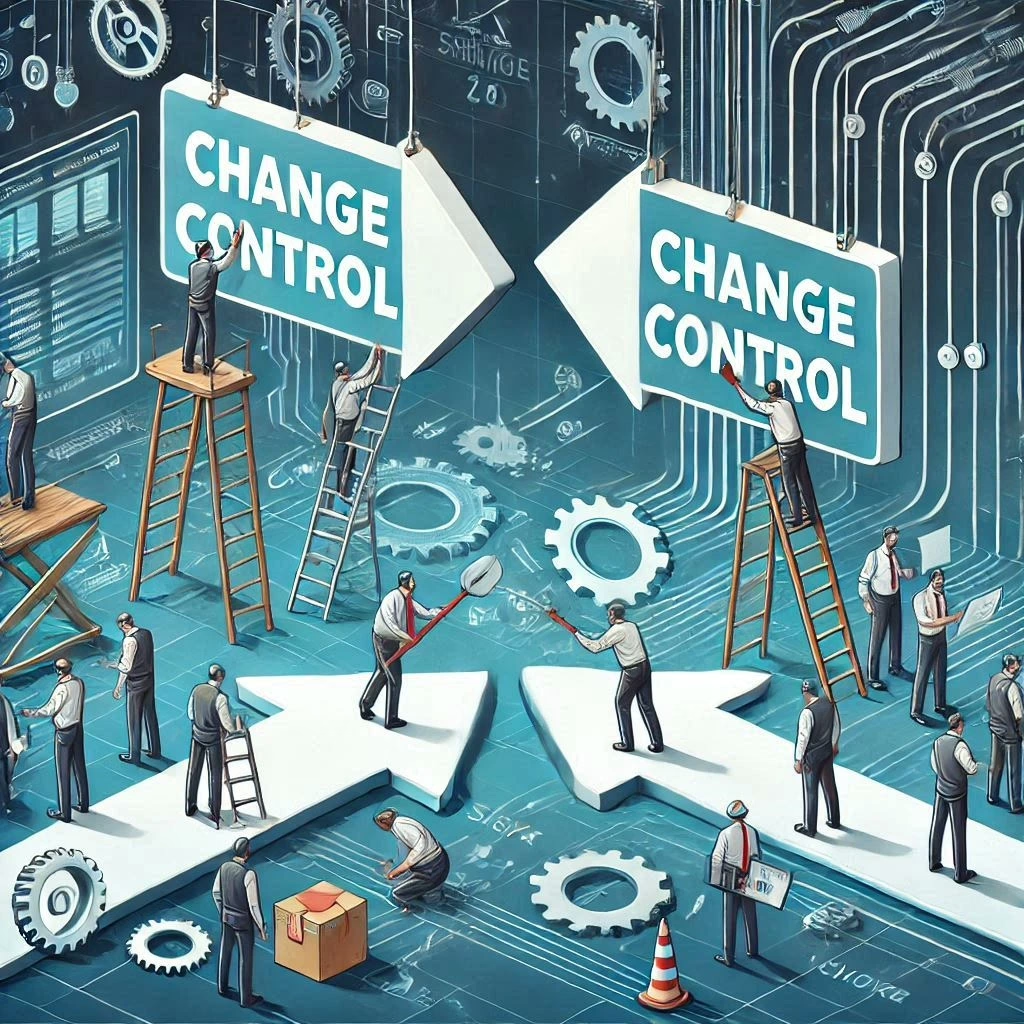I. Introduction
Hello, fellow project managers and aspiring leaders! If you’ve ever managed a project, you know that it can be both an exhilarating and challenging experience. From brainstorming creative solutions to keeping your team motivated, there’s never a dull moment in the world of project management. But there’s one aspect of project management that often keeps us on our toes: project risk.
Understanding and managing project risk is a critical skill for every project manager. No matter how well-prepared we are, unexpected events and unforeseen challenges can always pop up, threatening to derail our well-laid plans. That’s why I’ve put together this comprehensive guide on project risk. Whether you’re a seasoned project manager or just starting on your journey, this guide will help you navigate the uncertainties and ensure your projects have the best chance at success.
In the following sections, we’ll dive deep into the concept of project risk, explore its significance in project management, and discuss the crucial role it plays in determining a project’s success or failure. I’ll also share some of my own experiences, both the triumphs and the pitfalls, to give you a real-world perspective on managing project risk.
So, grab your favorite cup of coffee or tea, and let’s jump into the exciting world of project risk management!
II. What is Project Risk?
Before we dive into the nitty-gritty of project risk management, let’s first define what we mean by “project risk.” Understanding the concept of project risk is vital to managing it effectively, and I’ve found that having a clear definition helps me keep my thoughts organized when I’m knee-deep in a complex project.
A. Definition of project risk
At its core, project risk refers to the uncertainty surrounding events, circumstances, or conditions that could have a negative impact on a project’s objectives. These uncertainties can manifest as threats that may cause delays, increase costs, or degrade the quality of your project’s deliverables. However, it’s essential to remember that risks are not inherently bad; they are simply events or conditions that could influence your project’s outcome.
B. Examples of project risks
Throughout my career, I’ve encountered a wide variety of project risks. Some are more common than others, but every project has its unique set of challenges. Here are a few examples of risks you might face in your projects:
- Unforeseen technical difficulties, such as software bugs or hardware failures
- Changes in regulatory requirements that impact your project’s scope
- Key team members leaving the project or becoming unavailable
- Budget constraints or funding cuts
- Natural disasters, such as floods or earthquakes, disrupting your project’s progress
C. Different types of risks (known and unknown)
In my experience, risks can be broadly classified into two categories: known risks and unknown risks. Known risks are those uncertainties that you can identify and plan for during the project planning phase. These might include tight deadlines, limited resources, or potential conflicts between stakeholders.
On the other hand, unknown risks are those that you cannot anticipate, making them more challenging to manage. A classic example of an unknown risk is the COVID-19 pandemic, which disrupted countless projects worldwide. As project managers, it’s our responsibility to be prepared for both known and unknown risks to minimize their impact on our projects.
Now that we have a solid understanding of what project risk is, let’s explore its significance in project management and why it’s so essential for us to manage it effectively.
III. The Significance of Project Risk in Project Management
Project risk is an inevitable part of every project, but why should we, as project managers, pay special attention to it? Let’s dig deeper into the significance of project risk and how it can make or break the success of our projects.
A. The impact of risks on project success
One of my most memorable projects was a software development project that seemed straightforward at first glance. However, halfway through the project, we encountered a critical bug in the software that required significant rework, causing us to miss our initial deadline. This experience taught me that risks can have a profound impact on a project’s success, as they can lead to delays, cost overruns, or even the need to abandon the project altogether.
B. The role of risk management in project planning
If there’s one thing I’ve learned in my years as a project manager, it’s that risk management is an indispensable aspect of project planning. By identifying, assessing, and addressing potential risks early on, we can better prepare for uncertainties and minimize their impact on our projects. A well-thought-out risk management plan enables us to allocate resources more efficiently, prioritize tasks effectively, and set realistic expectations with stakeholders.
C. How risks can lead to opportunities for improvement
While risks may seem like unwelcome obstacles, they can also present opportunities for growth and improvement. I once managed a project where a sudden change in market conditions forced us to rethink our entire approach. Although it was challenging, this unexpected turn of events ultimately led to a more innovative and successful solution. Embracing risks as opportunities for learning and growth can help us become more agile and adaptable project managers, ready to face whatever challenges come our way.
In summary, project risk is an essential aspect of project management that can significantly influence a project’s success or failure. By understanding and managing risks effectively, we can create more robust project plans, improve our decision-making, and ultimately deliver better results for our stakeholders.
Now that we’ve explored the importance of project risk, let’s discuss how to identify, assess, and prioritize risks in our projects.
IV. Identifying and Assessing Project Risks
Risk identification and assessment are the foundations of effective risk management. By understanding the potential risks lurking in our projects, we can develop strategies to mitigate or avoid them altogether. In this section, I’ll share some tools and techniques I’ve found helpful in my own projects for identifying and assessing risks.
A. Tools and techniques for identifying risks
- Brainstorming: One of the most effective methods I’ve used for identifying risks is brainstorming with my team. Bringing together diverse perspectives allows us to uncover potential risks we might not have considered on our own. Don’t be afraid to think outside the box and encourage open, honest discussions.
- SWOT analysis: Conducting a SWOT (Strengths, Weaknesses, Opportunities, Threats) analysis can help identify risks by examining the internal and external factors that could affect your project. Analyzing your project’s strengths and weaknesses, as well as the opportunities and threats it faces, can reveal potential risks and areas for improvement.
- Expert judgment: Consulting with subject matter experts, both within and outside your organization, can provide valuable insights into potential risks. Experts often have years of experience and can draw from their own knowledge to identify risks you may not have considered.
- Historical data: Reviewing data from past projects, especially those similar to your current project, can be a goldmine for identifying potential risks. Learn from previous successes and failures to anticipate and avoid potential pitfalls in your current project.
B. Qualitative and quantitative risk analysis
Once you’ve identified the potential risks in your project, the next step is to assess their likelihood and impact. Qualitative and quantitative risk analysis techniques can help prioritize risks, allowing you to focus on those that pose the greatest threat to your project.
- Probability and impact matrix: A probability and impact matrix is a simple tool that ranks risks based on their likelihood of occurrence and their potential impact on the project. By plotting risks on this matrix, you can easily visualize which risks require immediate attention and which can be monitored less closely.
- Expected monetary value (EMV): EMV is a quantitative risk analysis technique that calculates the potential financial impact of a risk by multiplying its probability of occurrence by its potential monetary impact. This can be especially helpful when dealing with risks that have significant cost implications for your project.
- Sensitivity analysis: Sensitivity analysis helps identify which risks have the most significant impact on your project’s objectives by examining how changes in risk factors affect the overall project outcome. This technique can be particularly useful when dealing with complex projects with multiple interrelated risks.
C. Risk prioritization and ranking
After assessing the risks, it’s essential to prioritize and rank them based on their likelihood and impact. Prioritizing risks allows you to allocate resources effectively and focus your efforts on addressing the most critical threats to your project’s success.
In the next section, we’ll explore strategies for responding to the risks we’ve identified and assessed.
V. Risk Response Planning
Now that we’ve identified and assessed the potential risks in our projects, it’s time to develop a plan to address them. Risk response planning is crucial for ensuring that we’re well-equipped to handle uncertainties and minimize their impact on our projects. In my experience, having a solid risk response plan has made all the difference in navigating challenges and achieving success.
A. Risk response strategies
When planning your response to project risks, consider the following strategies:
- Avoidance: Sometimes, the best way to manage a risk is to avoid it altogether. This could involve altering the project plan or scope to eliminate the risk entirely. For instance, if a specific technology poses a high risk, consider using an alternative solution that carries less risk.
- Mitigation: When avoidance isn’t feasible, risk mitigation involves taking steps to reduce the likelihood or impact of a risk. This could involve implementing additional controls, providing additional training to team members, or adopting new processes to minimize the risk’s potential impact.
- Transference: Transferring risk involves shifting the responsibility for managing the risk to another party, such as a vendor or subcontractor. This strategy can be useful when dealing with risks that require specialized expertise or resources to manage effectively.
- Acceptance: In some cases, it may be necessary to accept a risk if the cost or effort required to address it outweighs the potential benefits. When accepting a risk, it’s crucial to monitor it closely and have a contingency plan in place to deal with any potential negative consequences.
B. Contingency planning and reserves
Despite our best efforts, there will always be risks that materialize and impact our projects. That’s why it’s essential to have a contingency plan in place to address these unexpected events. Contingency plans outline the specific steps your team will take to respond to a risk if it occurs.
In addition to developing contingency plans, consider establishing contingency reserves. These are funds set aside to cover the costs of addressing risks that materialize during the project. Having a contingency reserve can provide a financial safety net, ensuring that your project can continue even when faced with unforeseen challenges.
C. Risk monitoring and control
Risk management is an ongoing process that requires continuous monitoring and control throughout the project lifecycle. Regularly review and update your risk register, track the progress of risk response plans, and communicate with stakeholders about any changes in the risk landscape.
In the next section, we’ll discuss the role of project managers in managing risks and how to integrate risk management into the project lifecycle.
VI. The Role of Project Managers in Managing Risks
As project managers, we play a critical role in managing risks and ensuring that our projects stay on track despite uncertainties. In this section, I’ll share some insights into how we can effectively integrate risk management into the project lifecycle and keep our stakeholders informed about potential risks.
A. Integrating risk management into the project lifecycle
Risk management isn’t just a one-time activity that we tackle during the planning phase; it’s an ongoing process that we must weave into every aspect of the project lifecycle. Here are some ways I’ve found effective in integrating risk management throughout my projects:
- Initiation: During the project initiation phase, begin identifying high-level risks that could impact the project’s feasibility or success. This early risk identification can help inform the project’s scope, budget, and timeline.
- Planning: As you develop the project plan, continue identifying and assessing risks, and integrate risk response strategies into your project schedule and budget.
- Execution: During project execution, closely monitor risks and implement your risk response plans as needed. Be prepared to adapt your approach as new risks emerge or existing risks evolve.
- Monitoring and controlling: Regularly review your risk register and track the progress of risk response plans. Adjust your strategies as necessary to address any changes in the risk landscape.
- Closing: After the project is completed, conduct a thorough risk management review to identify lessons learned and apply those insights to future projects.
B. Communicating risks to stakeholders
One of the most critical aspects of risk management is effectively communicating risks to stakeholders. Transparent and open communication helps build trust and ensures that stakeholders understand the potential challenges the project may face.
- Be proactive: Don’t wait for stakeholders to ask about risks. Keep them informed about potential risks and your plans to address them throughout the project.
- Use clear, concise language: When discussing risks, avoid using jargon or technical terms that may confuse non-expert stakeholders. Explain risks in plain language, focusing on their potential impact and your response strategies.
- Provide regular updates: Keep stakeholders in the loop by providing regular updates on the status of risks and any changes in your risk response plans.
C. Ongoing risk management activities and best practices
As you continue to hone your risk management skills, consider implementing these best practices to help you stay ahead of potential risks:
- Continuously learn and adapt: Stay informed about industry trends, emerging risks, and best practices for managing risk in your field.
- Foster a risk-aware culture: Encourage open discussions about risks among your team members and stakeholders, and promote a culture of proactive risk management.
- Leverage technology: Consider using project management and risk management software to help you track, analyze, and respond to risks more efficiently.
In the next section, we’ll explore a real-world example of effective risk management in action.
VII. A Real-World Example of Effective Risk Management
To wrap up our comprehensive guide on project risk, I’d like to share a real-world example from my own experience that highlights the importance of effective risk management in ensuring project success.
A. The challenge: A tight deadline and an ambitious project scope
A few years ago, I was tasked with managing a large-scale project to develop and launch a new software application within a tight deadline. The project scope was ambitious, and the stakes were high, as the client was relying on the software to support a significant business expansion.
B. The risks: Technical difficulties, resource constraints, and shifting requirements
From the outset, I knew that this project would be fraught with risks. Some of the most pressing risks included potential technical difficulties, resource constraints due to the tight deadline, and the possibility of shifting requirements as the project progressed.
C. The risk management approach: Proactive planning and continuous monitoring
To address these risks, my team and I took a proactive approach to risk management, integrating it into every stage of the project lifecycle. We began by conducting a thorough risk assessment, identifying potential risks, and assessing their likelihood and impact. We then developed a comprehensive risk response plan, outlining the specific actions we would take to mitigate or avoid each risk.
Throughout the project, we continuously monitored risks and adjusted our response plans as needed. For example, when we encountered unexpected technical challenges, we quickly mobilized additional resources and adjusted our project schedule to ensure we could address the issue without jeopardizing the deadline.
D. The outcome: A successful project and valuable lessons learned
Thanks to our diligent risk management efforts, we were able to deliver the software on time and within budget, helping our client successfully expand their business. This experience reinforced the importance of effective risk management in ensuring project success and taught me valuable lessons that I’ve applied to countless projects since.
In conclusion, understanding and managing project risk is a critical skill for every project manager. By identifying, assessing, and addressing potential risks early on, we can better prepare for uncertainties and minimize their impact on our projects. I hope that this comprehensive guide has provided you with valuable insights and tools to help you navigate the complex world of project risk management. Here’s to your success in managing risks and leading your projects to victory!
VIII. Conclusion and Key Takeaways
As we come to the end of our comprehensive guide on project risk management, let’s take a moment to reflect on the key takeaways and lessons we’ve learned along the way. As project managers, our ability to effectively manage risk can make all the difference in determining the success or failure of our projects.
A. The importance of understanding project risk
Understanding the concept of project risk and its significance in project management is crucial to our success. By recognizing that risks are inherent in every project, we can be better prepared to address uncertainties and navigate the challenges that arise during the project lifecycle.
B. Identifying and assessing risks
Effectively identifying and assessing risks is the foundation of successful risk management. By employing tools and techniques such as brainstorming, SWOT analysis, expert judgment, and historical data, we can uncover potential risks and prioritize them based on their likelihood and impact.
C. Developing and implementing risk response strategies
Once we’ve identified and assessed the potential risks in our projects, it’s essential to develop and implement appropriate risk response strategies. These may include avoidance, mitigation, transference, or acceptance. Having a solid risk response plan in place will enable us to address risks proactively and minimize their impact on our projects.
D. The role of project managers in managing risks
As project managers, we play a critical role in managing risks throughout the project lifecycle. By integrating risk management into every stage of our projects and effectively communicating risks to stakeholders, we can ensure that our projects remain on track despite uncertainties and challenges.
E. Learning from real-world experiences
Real-world examples, like the one shared in this guide, can provide invaluable insights into the importance of effective risk management. By learning from our own experiences and those of others, we can continue to refine our risk management skills and improve our ability to navigate the complexities of project management.
In conclusion, mastering the art of project risk management is essential for every project manager. By equipping ourselves with the knowledge, tools, and techniques shared in this guide, we can confidently face the uncertainties and challenges that come our way. Here’s to your continued success in managing risks and leading your projects to new heights!
To find out how Artificial Intelligence is changing the Project Management landscape, you have enjoy reading this article https://www.shaunstoltz.com/did-artificial-intelligence-just-change-everything-about-project-management/
Find out more about Shaun Stoltz https://www.shaunstoltz.com/about/
This post was written by an AI and reviewed/edited by a human.



